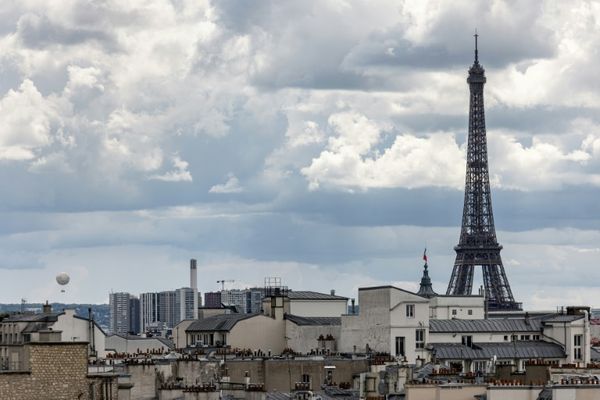
Drought in what should be the rainy season is leading to an expensive logjam in the vital waterway
More than 200 vessels are stuck waiting to pass through the Panama Canal, one of the world’s most important shipping routes, because of a dramatic fall in water levels.
The “famed” canal is “now home to the planet’s biggest traffic jam”, which is “threatening to ensnarl the holiday shipping season” and “raising alarm among canal officials”, said ABC News.
The problem has brought back memories of the delays at the Suez Canal in March 2021, when the crucial waterway was blocked for six days when a container ship ran aground.
Why are water levels falling?
The 109-year-old canal “works through a water lock system that moves ships up or down as they make it to the other side”, explained ABC News. As each ship passes through, it takes with it millions of gallons of water that “gets sucked in from nearby lakes”.
This fresh water is vital for the canal to operate and there has always been enough – until now. Canal authorities said a longer dry season and a shorter rainy season this year have combined to create a water shortage.
The “highly unusual drought, right in the middle of Panama’s supposed wet season, has lowered water levels in two reservoirs that supply the canal”, said BBC Future. Operators have had to restrict the size and number of ships that pass through its system of locks each day, as well as the amount of cargo they are allowed to carry. The authorities have limited the number of crossings to about 32 a day instead of around 36.
What does this mean for trade?
Some $270 billion (£210 billion) worth of cargo normally passes along the canal each year on its way to over 170 countries, estimated the Journal of Shipping and Trade, so the stakes are high.
The goods that pass through the bottleneck include furniture, consumer goods or building materials, grain, oil and gas. In our “just-in-time” global economy, the markets trading these products and resources “can’t wait for long”, said the BBC.
The cost of shipping from China to the US Gulf Coast through the canal has “jumped more than a third since the end of June”, said Christine Murray, the Financial Times’ Mexico and Central America correspondent, on the FT News Briefing podcast. Waiting times for tankers carrying liquefied natural gas have increased from eight days to 18 days in “just a few weeks”.
So the delays mean shipping companies “incur more fees” and “the longer these delays go on”, their costs “go up”, said ABC News’ foreign correspondent Matt Rivers. “And as we saw during the pandemic, what happens when companies incur more costs? Do they eat it in the public good? No,” he added. Instead, they “just pass those costs right along to the consumer”.
Shipping companies are paying up to $2.4 million per vessel if they want to beat the “logjam” of carriers waiting to sail through canal, according to one company active in the market.
“You can skip the queue but it’s immensely costly,” Oystein Kalleklev, chief executive of Avance Gas, told Bloomberg. He added that the price has “gone rapidly up” and “when you add the regular fee you’re getting close to $3 million to get your ships through”.
What can be done?
One option being considered to resolve the current issue of low water levels in the Panama Canal, said Murray, is to “build a new reservoir in a different region, which they say could mitigate the water issues until 2075”. “But obviously, it’s a very big project,” she said.
Looking further ahead, the issue has raised questions about whether an alternative route between the Atlantic and Pacific Oceans is needed. The BBC noted that, in the early 1900s before the Panama Canal was built, the US had two options: build a canal across Nicaragua, or through Panama. Although the Senate voted for the Panama option, the idea of a Nicaraguan canal has “never gone away”, it said. However, it would cost more than $40 billion according to estimates and there would “undoubtedly be environmental consequences associated with such a megaproject”.
Writing for Al Jazeera, Belén Fernández said building the Panama Canal in the first place “encapsulated the recklessness and hubris of man’s efforts to dominate nature”.
Panama might prove to be “a microcosm of capitalist self-combustion”, she wrote, but “the potential climate-related demise of a canal that never should have been constructed seems an apt metaphor for an entire system that never should have been”.







